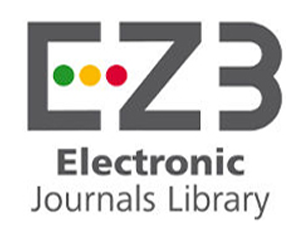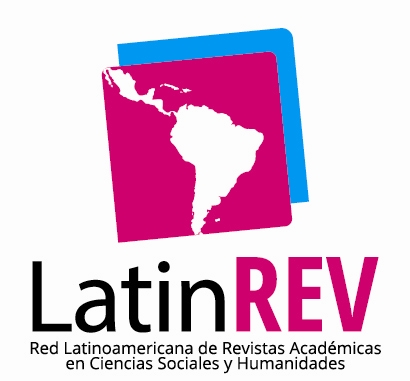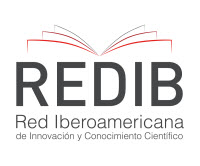Loucura e verossimilhança em Drácula (1897), de Bram Stoker
DOI:
https://doi.org/10.14393/artc-v25-n46-2023-71197Palavras-chave:
Drácula, loucura, verossimilhançaResumo
O artigo analisa a loucura não apenas como patologia que integra a trama ficcional, mas também como expediente literário que confere verossimilhança à narrativa de Drácula (1897), o romance mais reconhecido de Bram Stoker. Além de destacar o papel nuclear desempenhado por Renfield, paciente do Dr. Seward, pretende-se demonstrar que a pluralidade de perspectivas, manifestada em diários e cartas redigidas por diferentes personagens, ampara uma unidade de sentido consolidada pela correspondência entre autor, obra e recepção. Dito de outra forma, a ausência de um narrador onisciente e a reunião de relatos provenientes de múltiplos pontos de vista permitem que o leitor assuma o papel do médico que estuda, diagnostica e trata o alienado, perscrutando a sua loucura. A proximidade entre alienista e louco, no entanto, torna imprecisa a fronteira entre sanidade e insanidade, o que faz supor a existência de uma “linguagem da loucura” a orientar o enredo forjado por Stoker.
Downloads
Referências
ALLIATA, Michela Vanon. “Number one, the lunatic asylum man”: Dracula and the limits of institutional psychiatry. Annali di Ca’ Foscari, v. 49, Venezia, 2015.
ARATA, Stephen D. The occidental tourist. Dracula and the anxiety of reverse colonization. Victorian Studies, v. 33, n. 4, Bloomington, 1990.
AYRES, Monica. The sanity of science: Renfield and vivisection. Shawangunk Review, v. 22, New York, 2011.
BENTLEY, Christopher F. The monster in the bedroom: sexual symbolism in Bram Stoker’s Dracula. Literature and Psychology, v. 22, n. 1, Teaneck, 1972.
BRYANT, John. Moby-Dick as revolution. In: BLOOM, Harold (ed.). Herman Melville’s Moby-Dick. Updated Edition. New York: Bloom’s Literary Criticism, 2007.
CRAFT, Christopher. ‘Kiss me with those red lips’: gender and inversion in Bram Stoker’s Dracula. Representations, n. 8, Oakland, 1984.
DAVIE, Neil. A "criminal type" in all but name: British prison medical officers and the "Anthropological" approach to the study of crime (c. 1865-1895). Victorian Review, v. 29, n. 1, Baltimore, 2003.
DUFF, David. Romanticism and the uses of genre. New York: Oxford University Press, 2009.
ESTEVES, Lainister de Oliveira. As ficções editoriais e narrativas de Robinson Crusoé. Aletria, v. 31, n. 2, Belo Horizonte, 2021.
FONTANA, Ernest. Lombroso's criminal man and Stoker's Dracula. In: CARTER, Margaret L. Dracula: the vampire and the critics. Ann Arbor: UMI Research Press, 1988.
FRAYLING, Christopher. Prefácio. In: STOKER, Bram. Drácula. São Paulo: Penguin, 2014.
GATES, David. Bram Stoker’s Dracula and the gothic tradition. Thesis (Master of Arts) – McMaster University, Massachusetts, 1976.
GONÇALVES, Marcia Heloisa Amarante. Animalidade confundida: vilania e monstruosidade em Drácula. Dissertação (Mestrado em Letras) – UFF, Niterói, 2012.
GREENWAY, John. “Unconscious cerebration” and the happy ending of Dracula. Journal of Dracula Studies, v. 4, Kutztown, 2002.
HALBERSTAM, Judith. Skin shows: gothic horror and the technology of monsters. North Carolina: Duke University Press, 2000.
HINDLE, Maurice. Introdução. In: STOKER, Bram. Drácula. São Paulo: Penguin, 2014.
HUGHES, Raymond G. Melville and Shakespeare. The Shakespeare Association Bulletin, v. 7, n. 3, Oxford, 1932.
HUGHES, William. ‘So unlike the normal lunatic’: abnormal psychology in Bram Stoker’s Dracula. Studies in English, v. 11, Austin, 1993.
LASA, Cecilia. The vampirisation of the novel: narrative crises in Dracula. Palgrave Communications, v. 4, n. 53, London, 2018.
McKEE, Patricia. Racialization, capitalism, and aesthetics in Stoker's "Dracula". Novel: A Forum on Fiction, v. 36, n. 1, Durham, 2002.
MILLER, April. ‘That's why the lady is a vamp’: discourses of criminality, sexual inversion and vampirism in fin-de-siècle and modernist cultures. Thesis (Master of Arts) – University of Alberta, Alberta, 2000.
PEDLAR, Valerie. The most dreadful visitation: male madness in Victorian fiction. Liverpool: Liverpool University Press, 2006.
PICK, Daniel. ‘Terrors of the night’: Dracula and ‘degeneration’ in the late nineteenth century. Critical Quarterly, v. 30, n. 4, Hoboken, 1988.
QUIANGALA, Anne. Representação feminina em Drácula. In: STOKER, Bram. Drácula. Rio de Janeiro: Antofágica, 2020.
RICHARDSON, Maurice. The psychoanalysis of ghost stories. Twentieth Century, v. 166, n. 994, New York-Cambridge, 1959.
SENF, Carol A. ‘Dracula’: Stoker’s response to the New Woman. Victorian Studies, v. 26, n. 1, Bloomington, 1982.
SHELLEY, Mary. Frankenstein ou o prometeu moderno. São Paulo: Penguin, 2015.
SILVA, Evander Ruthieri da. Degeneracionismo, variação racial e monstruosidades na literatura de horror de Bram Stoker. Dissertação (Mestrado em História) – UFPR, Curitiba, 2016.
SILVA, Evander Ruthieri da. Almas ousadas, naturezas impetuosas: crime e degenerescência na literatura de Bram Stoker (1847-1912). Dimensões, v. 38, Vitória, 2017.
SOUZA, Alexandre Barbosa de. Apresentação. In: STOKER, Bram. Drácula: edição comentada. Rio de Janeiro: Zahar, 2017.
STEN, Christopher. Sounding the whale: Moby-Dick as epic novel. In: BLOOM, Harold (ed.). Herman Melville’s Moby-Dick. Updated Edition. New York: Bloom’s Literary Criticism, 2007.
STOKER, Bram. Drácula. São Paulo: Penguin, 2014.
STOKER, William Thornley. On a case of subcranial hemorrhage treated by secondary trephining. Annals of Surgery, v. 7, n. 6, Philadelphia, 1888.
WELLS, H. G. A ilha do doutor Moreau. São Paulo: Via Leitura, 2018.
WILLIS, Martin. "The invisible giant", Dracula, and disease. Studies in the Novel, v. 39, n. 3, Baltimore, 2007.
WINTER, Elizabeth. All in the family: a retrospective diagnosis of R.M. Renfield in Bram Stoker’s Dracula. Journal of Dracula Studies, v. 12, Kutztown, 2010.
Downloads
Publicado
Edição
Seção
Licença
Autores que publicam nesta revista concordam com os seguintes termos da licença Creative Commons, adotada a partir da ArtCultura, v. 21, n. 39 (jul.-dez. 2019).
CC BY-NC-ND 4.0: o artigo pode ser copiado e redistribuído em qualquer suporte ou formato. Os créditos devem ser dados ao autor original e mudanças no texto devem ser indicadas. O artigo não pode ser usado para fins comerciais. Caso o artigo seja remixado, transformado ou algo novo for criado a partir dele, ele não pode ser distribuído.
Autores têm autorização para assumir contratos adicionais separadamente, para distribuição não exclusiva da versão do trabalho publicada nesta revista (ex.: publicar em repositório institucional ou como capítulo de livro), com reconhecimento de autoria e publicação inicial nesta revista.












